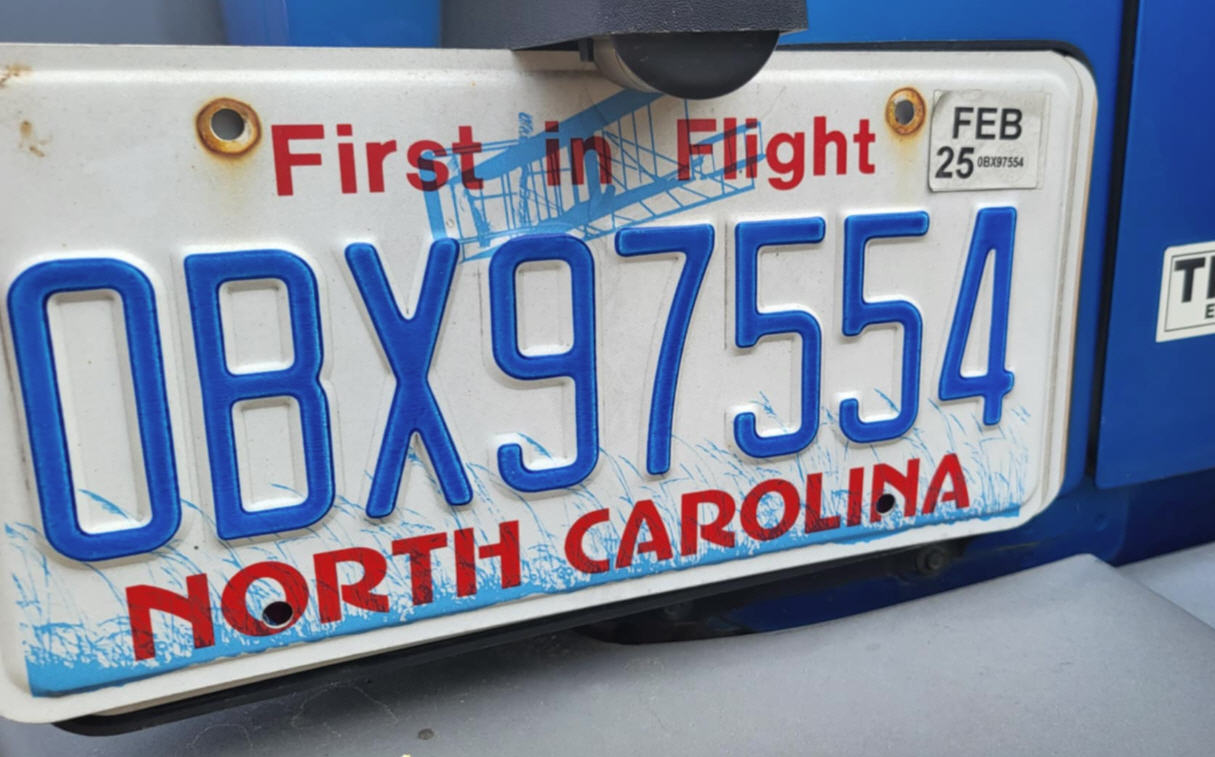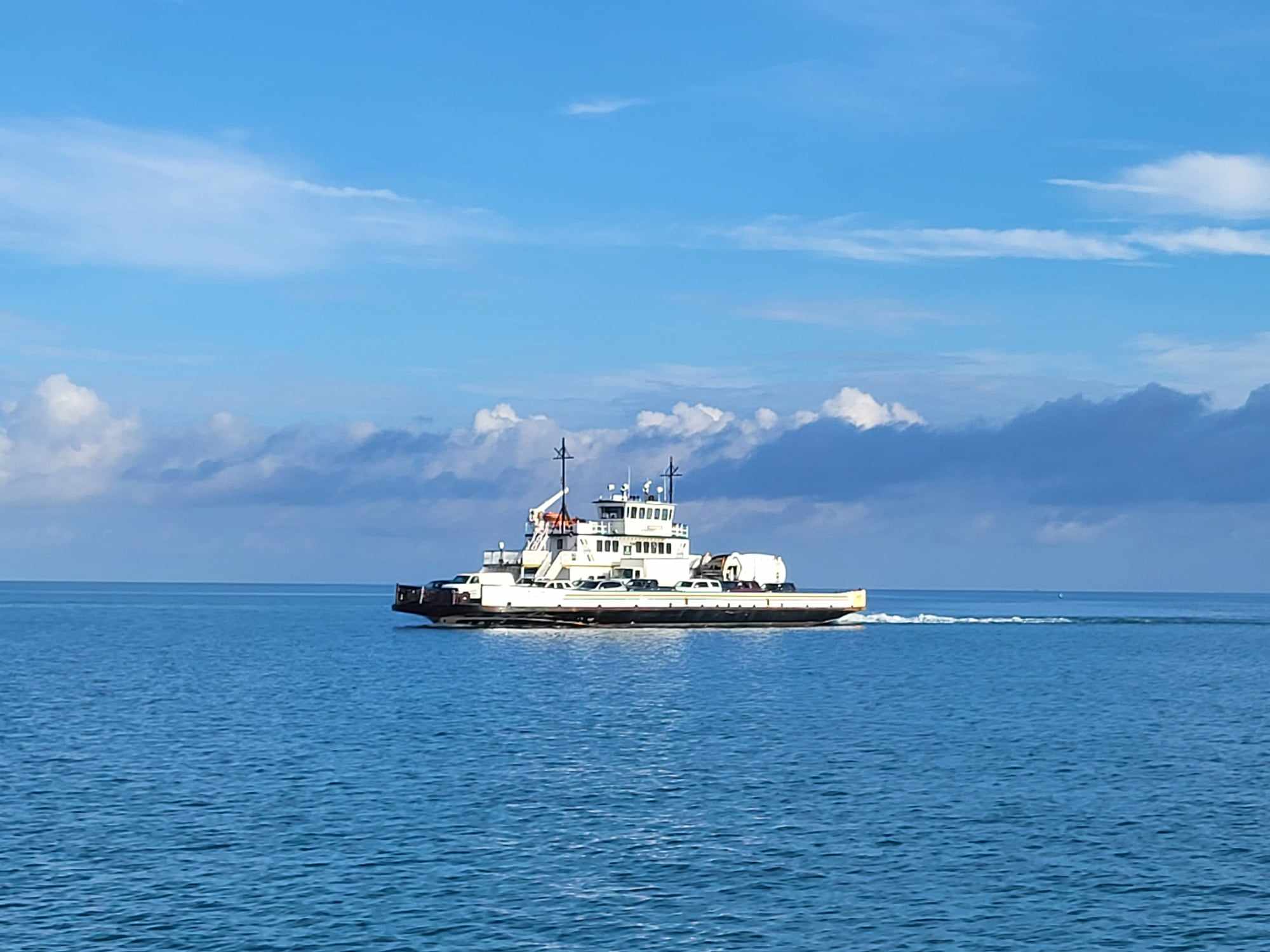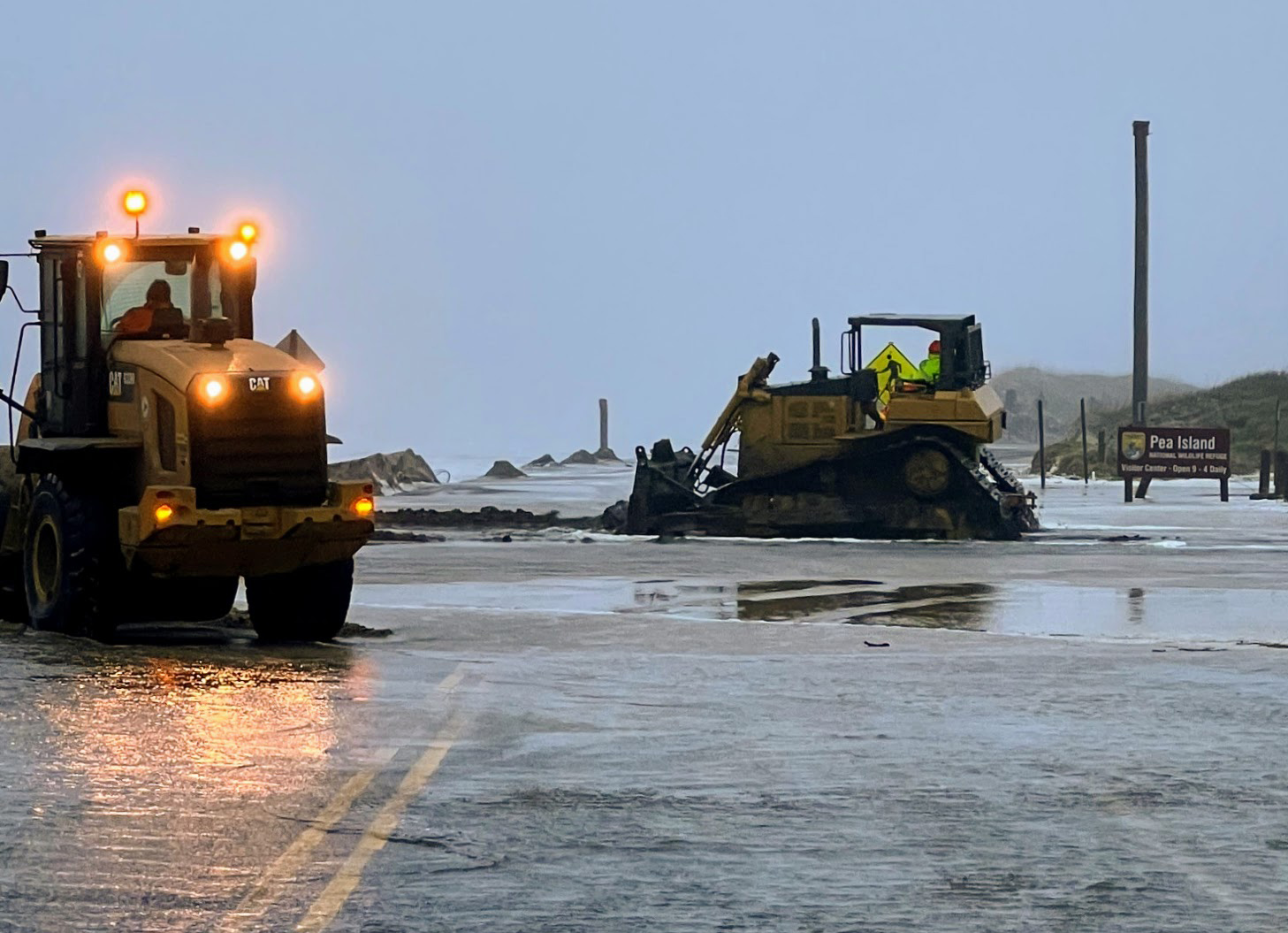Historic shipwreck moves to Graveyard of the Atlantic Museum in Hatteras village…..WITH SLIDE SHOW
(Editor’s note: The shipwreck that was featured in this story can be seen at the Graveyard of the Atlantic Museum in Hatteras village — on a concrete slab on the side of the building. The wreck, still believed to perhaps be the oldest found in North Carolina, is sheltered, but Joseph Schwarzer, the museum’s executive director said in an article last year that it is deteriorating because its timbers cannot be rehydrated. A more protective shelter would cost $120,000, he said, which is not affordable.
“We’re trying,” Schwarzer said. “All you can do is elevate it and keep it as dry as possible.”)
In the wee stormy hours of Tuesday morning, July 20, what is likely the oldest shipwreck to be discovered in North Carolina slowly made its way down the Outer Banks highways to the Graveyard of the Atlantic Museum in Hatteras village.
The 7.5-ton, 17-foot-wide by 37-foot-long wreckage, which was discovered in Corolla in late 2009, was loaded onto a flat-bed trailer on Monday afternoon near the Currituck lighthouse, where it has been resting since its excavation in April.
Around 12:30 a.m., with an entourage of museum directors, archaeologists, Park Service personnel, and a police escort surrounding it, the centuries-old wreckage headed for its final resting place.
The 90-mile trip from Corolla to Hatteras was expected to take between five and six hours, but, despite heavy winds and storms, the remains arrived in the parking lot of the Graveyard of the Atlantic Museum around 4 in the morning.
“It went so much faster than anyone anticipated,” Claire Aubel, public relations coordinator for the North Carolina Maritime Museums, said, citing excellent organization, a lack of traffic, and the pitch-perfect driving of park ranger Doug Blackmon.
Melanie Schwarzer, wife of museum director Joe Schwarzer, had a more poetic way of describing the move. “It was like a good ballet.”
She said that, as they entered each village, a new convoy of police escorts would “swoop in,” making for a quick and seamless journey. “Sometimes as many as six escort cars would be in front and behind us. I felt like the President,” she joked.
Also, she noted that in each village, there were folks standing on the side of the road cheering on the convoy.
Even though the wreck didn’t require a Secret Service detail, it is nonetheless an incredibly important discovery and an invaluable addition to the museum.
According to David Moore, curator of nautical archaeology for the North Carolina Maritime Museums, the massive solid-wood frames—which average 11 or 12 inches, but are as wide as 17 inches in some places—and the sole use of wood pegs date the ship to the early- to mid-17th century.
That would make it the oldest shipwreck to ever be discovered in North Carolina, and to have found such a large piece of such an old ship intact is really quite exciting.
For now, the 350- to 400-year-old wreckage is as mysterious as it is exciting.
“There’s a whole lot we don’t know about this thing,” Moore said. What he estimates right now, based on the construction and size of the remains, is that they came from a 17th century ship—likely a merchant ship—that was at least a 400-ton vessel, which, he added, is a “fairly substantially sized ship for the 17th century.”
One thing that might give researchers more insight into the age and nationality of the vessel is an analysis of the wood. According to Moore, the pre-eminent maritime powers of northwest Europe in the 17th century (England, France, Spain, Portugal, and the Netherlands) would have built their ships from white oak, so finding out what kind of wood the ship is made of will hopefully shed some light on the place of construction and the country of origin.
Another thing that might give up clues to the ship’s history are other artifacts—coins, spoons, and lead bale seals—that have been found along with the wreck.
Though many of the mysteries surrounding the vessel may never be solved, teams of researchers will be diligently working to unravel them.
And, eventually, the public will be able to come along for the ride.
Yesterday, volunteers from the North Carolina Department of Transportation Ferry Division and the United States Coast Guard will lift the remains from the trailer and place them on a cement slab—donated by the Friends of the Graveyard of the Atlantic Museum—that has been poured behind the museum, and plans will be formed on how to shelter the wreck and turn it into a working exhibit.
“That’s going to take a while,” said museum director Joe Schwarzer, who said that what he’s hoping for is something like they have at the Wright Brothers Museum in Kitty Hawk—a sturdy, tent-style structure composed of a hardy synthetic fabric.
“In the meantime,” he said, “we’ve got a lot of work to do.”
The remains will need to be cleaned and a cradle will need to be designed to hold the remains without stressing the structure. The curators will also need to take core and dendrochronological samples, as well as decide how and with what to treat the wood in order to best preserve it.
Schwarzer said he didn’t know when the exhibit would be completed, but when it is, it will be open to the public, and people will be able to walk around the wreck and watch archaeologists and researchers as they work on it.
“She’s a very big mystery,” Moore said, watching the remains as they were lifted from the bed of the trailer. “Something this size, this age…she’ll be interesting.”
Click Here To View Slide Show













